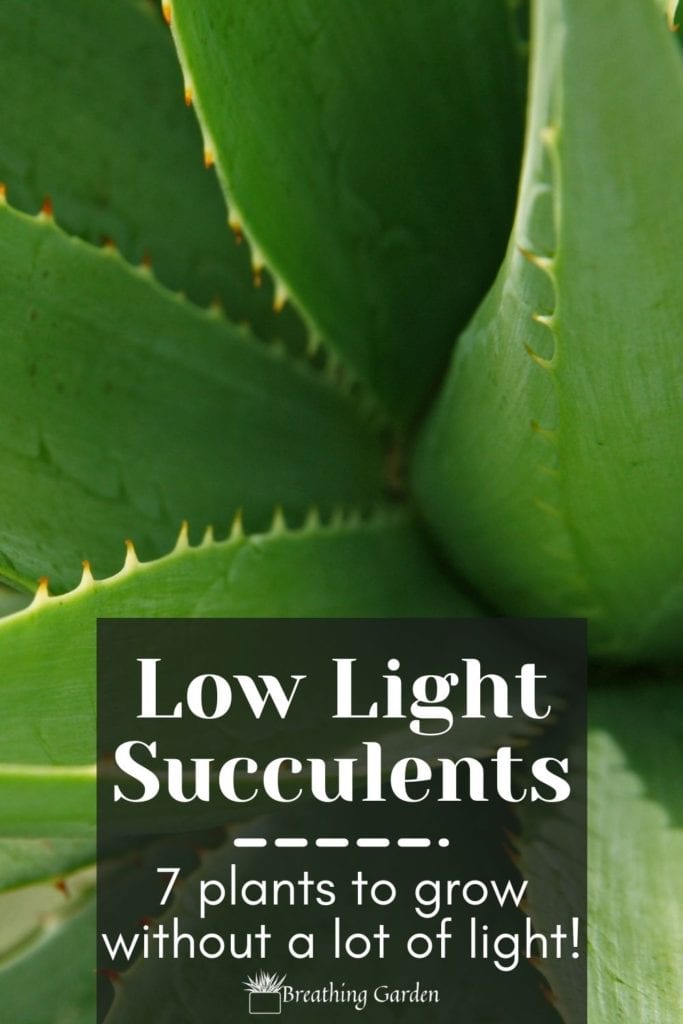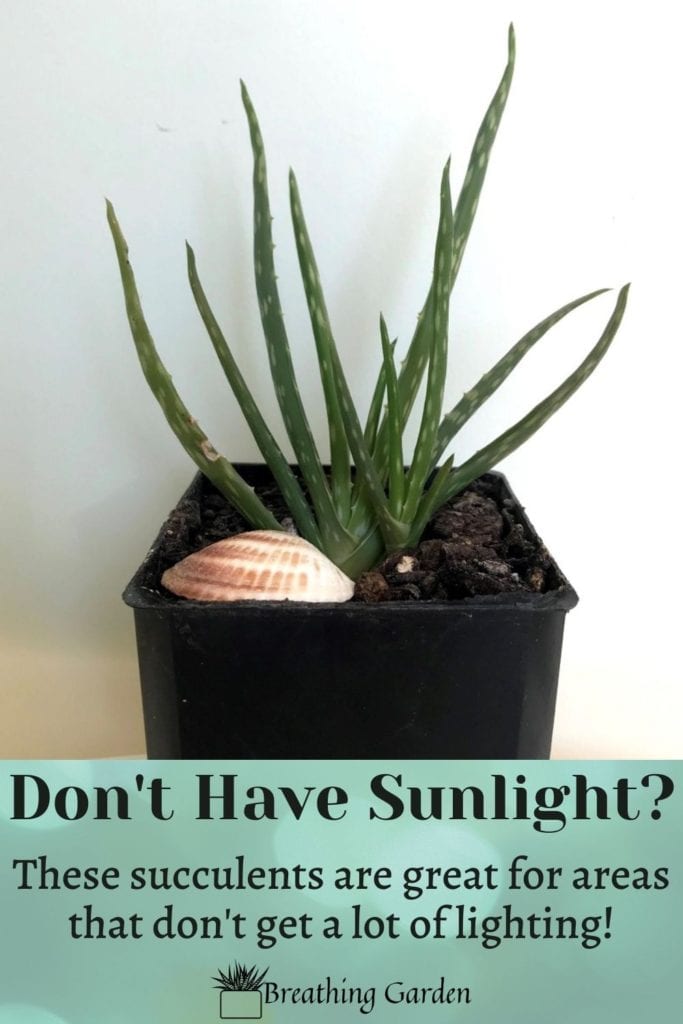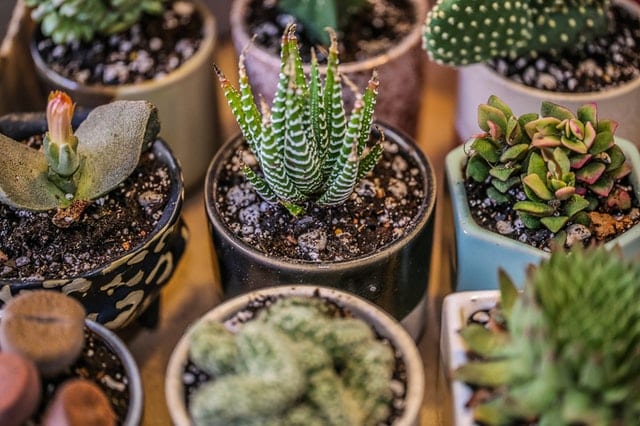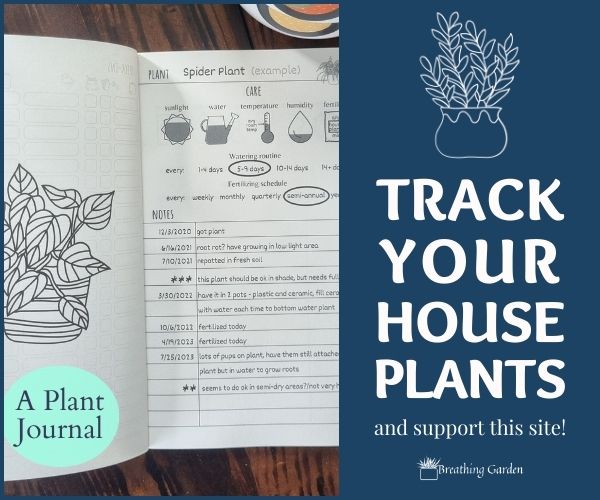Indoor plant care can sometimes be tedious. Some plants require a lot of sunlight while others need only a few hours of direct light. There are plants that require constant pruning, and more plants that can be left to grow with nothing more than watering.
*This post may include affiliate links. When you purchase items from these links, we will receive a small commission, at no extra cost to you, to help support this website. Thank you for your support! Read more ->
If you are looking for a low-maintenance plant that does not require a lot of sunlight, consider getting a succulent. The following are low light succulents that can be grown indoors that will work in just about any room because of all of these things going for them!
Related: Best Corner Plant Stands, Cute Succulent Pots
Aloe Vera
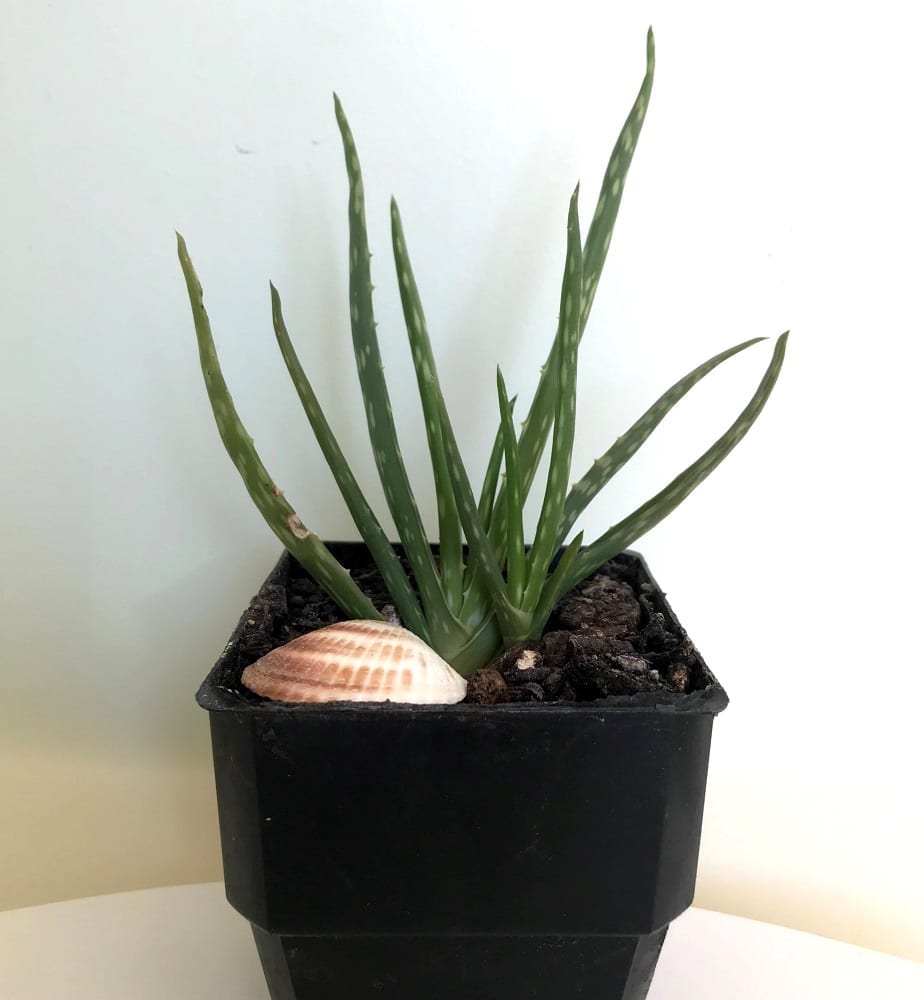
Many people know that Aloe is used in different products for its skin soothing and moisturizing abilities, but it is also a pretty easy succulent to have in your collection. This plant does very well without direct sunlight. Required watering is minimal, only needing water every few weeks through the warm months and less during the cold months.
The Aloe Vera plant has thick, pointy leaves. Leaf color ranges from a dull darker green to a blue-green shade. Some species have tiny spines along the leaf edges. Leaves are fleshy and often feel sponge-like to the touch. New growth appears in offshoots.
Be careful if you move this plant into a sunnier spot as it will burn if it’s transitioned from no sun to full sun too quickly!
The Snake Plant
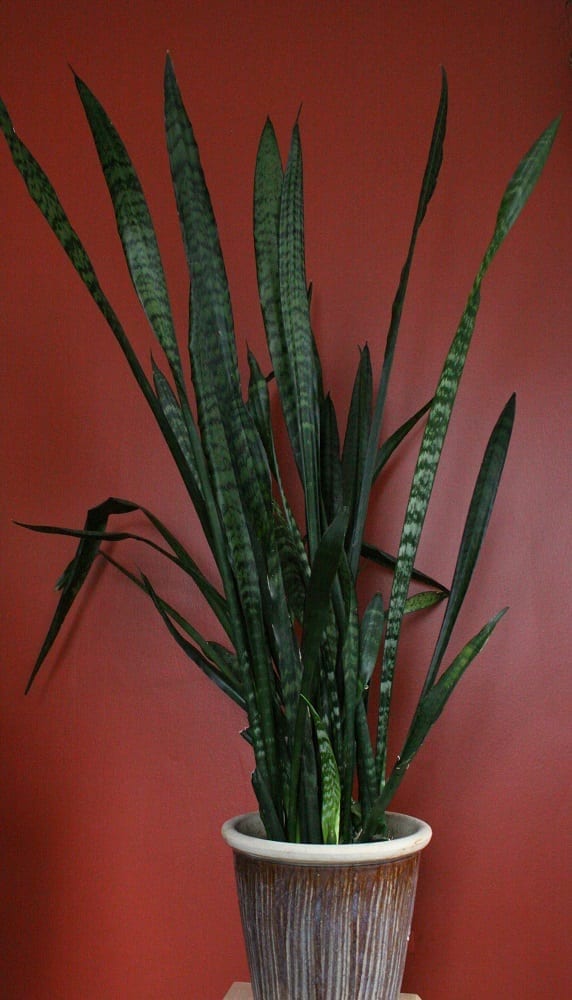
Also called Sansevieria, this succulent can grow to be several feet tall. It tends to be a more resilient succulent that is almost impossible to accidentally kill. The snake plant prefers low or artificial lighting and requires minimal watering.
In more humid climates, watering is only necessary on a bi-monthly basis, while the snake plant needs monthly watering in dryer climates. An added benefit to this plant is that it filters the air pollution inside. This makes it not a great low maintenance, low light succulent.
There are quite a few species that will provide different leaf shapes and coloring, but the most common variety is the Sansevieria trifasciata. The leaves are sharp and more slender. Otherwise known as the Mother-in-Law’s Tongue, the leaves are a dark green color with lighter green patterns. Read here for other snake plant varieties!
Keep reading: Do snake plants like humidity, Do snake plants need drainage holes?
Burro’s Tail
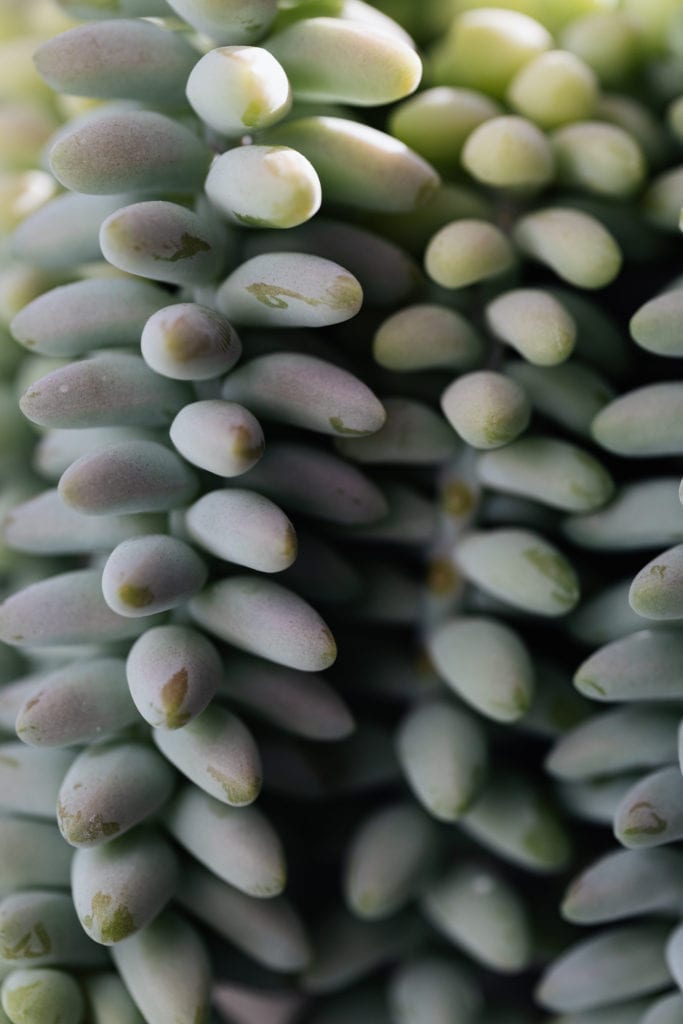
The sedum morganianum goes by several different names. It can be called the Burro’s Tail, Lamb’s Tail, or Horse’s Tail. This succulent is a cascading plant, with long stems that give a braided appearance due to the unique oval-shaped leaves. Stems can grow to be as long as two feet.
Colors can include blue-green, greenish gray, and deep green. The leaves have a pale blue powder that helps protect the plant from sunburn and aid in moisture retention. Unlike other succulents, this one can be a bit temperamental and very sensitive.
It should never be in direct sunlight and should not be transplanted unless absolutely necessary because the leaves can fall off easily. Watering needs are minimal and should only be done when the soil is completely dry because this succulent retains moisture very well.
Zebra Cactus

If you are looking for a visually stimulating succulent, the Haworthia margaritifera provides quite a different look. This succulent, also called the Zebra Cactus or Pearl Plant, has a very dark green leaf with white patterns that resemble a zebra’s stripes.
It is a miniature plant that only grows to about three inches tall. The zebra cactus is quite sensitive to overwatering. It does well in low and indirect lighting.
Cathedral Window

The Haworthia cymbiformis is a second species in the family with the zebra plant but quite different. It is another miniature variety that will only grow to about three inches. The leaves are a boat shape clustered to appear similar to a rose and leaves. These low light succulents are commonly called the cathedral window because of the translucent appearance at the leaf’s tips.
Cathedral windows are a very pale green with dark stripes that run the length of the leaves. This succulent is a blooming plant. It produces small white or pale pink flowers at the end of an eight inch stalk. Watering needs will depend on the season, requiring more frequent watering during the warmer months. The plant will tell you when it needs water, shown by slightly withered leaves.
Ponytail Palm
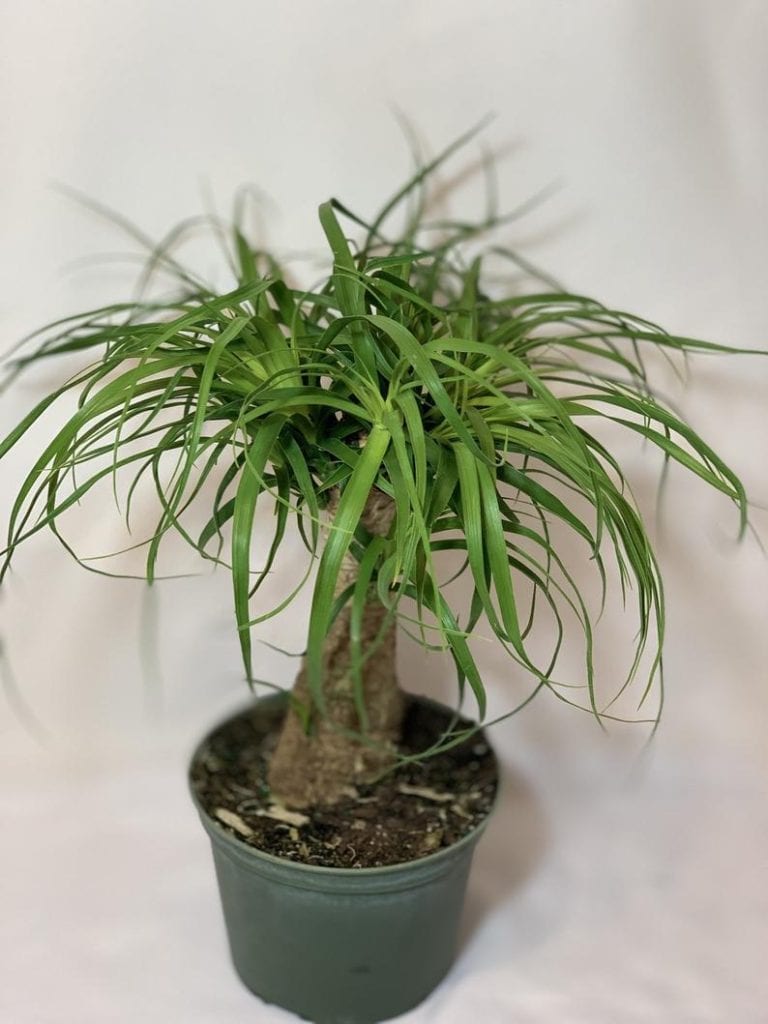
The Beaucarnea Recurvata, or Ponytail Palm, is often confused for a palm tree species but it is actually a succulent because of the trunk’s ability to store water. It begins with a bulged, thick stump and progresses to a thin stem at the top. Long, wispy leaves grow at the top of the stem that resemble a ponytail. (Read more about other plants that look like hair!)
Although the plant thrives in sunlight, out-of-control growing is curbed by keeping the succulent in low light conditions. Watering needs are minimal. This plant can go up to three weeks between watering. Similar to most succulents, it needs well-draining soil and overwatering should be avoided.
The ponytail palm is one of the few plants that is NOT toxic to pets and children.
Holiday Cactus
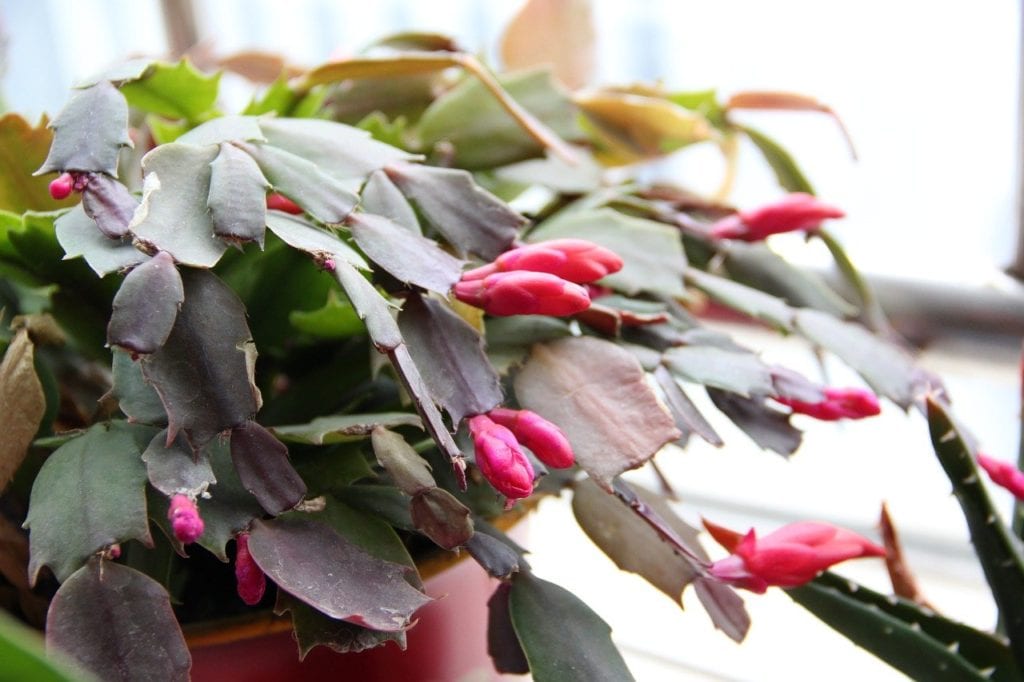
Schlumbergera plants, or holiday cacti, are three different species within this name: Thanksgiving cactus, Christmas cactus, and Easter Cactus. Each one is named for their blooming season. Basic care is the same for each species. Unlike many succulents, these varieties require more watering but not overwatered.
They do best in at least 14 hours of darkness or minimal light. Leaves are flattened and smooth, without thorns. Christmas and Easter cacti leaves have smoother edges, while the Thanksgiving cacti have a more serrated edge.
Blooms last between two and four months in their designated seasons. Thanksgiving cacti blooms can be yellow, red, pink, or white. Christmas cacti blooms can be orange, pink, red, or purple. Easter cacti blooms are peach, orange, red, pink, or lavender.
Low light succulents are great to grow because not every room can get full or direct sunlight. Thankfully, these plants will thrive without that!
Pin It!
Want to keep these plant ideas for later? Save them to Pinterest!

